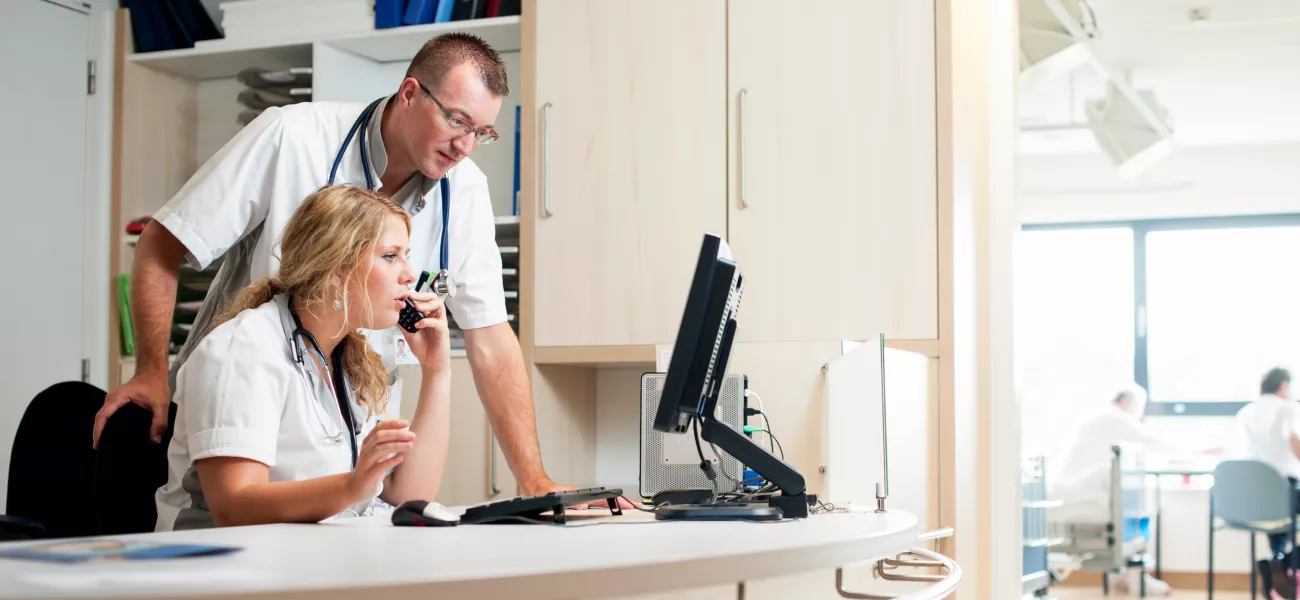
The healthcare sector has seen some of the most significant advances in technology. From hospital-based machinery to health trackers, technology providers are continually innovating to help practitioners monitor patient health.
Despite these innovations, healthcare facilities – and particularly hospitals – remain under resourced. Many are still recovering from the impact of the peak of the pandemic and are facing ongoing disruptions such as lack of funding, and a continuing tide of staff burnout and shortages. In fact, this is still impacting health systems in over 90% of countries.
Healthcare providers are searching for viable solutions to help improve patient care and the flow of operations at a reasonable cost. This is where remote patient monitoring can add value. In part catalyzed by the events of the last few years, the latest technological innovations are enabling more sophisticated telehealth capabilities in our healthcare system.
This blog explores these latest advances in remote patient care, and outlines how hospitals can implement them to safeguard patient care and optimize workflows.
Remote patient monitoring
Remote patient monitoring is included as one of the core technologies transforming healthcare in the World Health Organization’s (WHO) global strategy on digital health 2020-2025. It is the process of digitally capturing and exchanging health data from patient to healthcare practitioner as part of a patient’s electronic medical records (EMRs). It often refers to virtual appointments and at-home health monitoring, but can now also be used as a critical part of in-patient hospital care.
Many hospitals are starting to integrate telemetry devices with other technological capabilities like video, audio and real-time edge analytics to help healthcare practitioners monitor patients remotely.
Remote patient monitoring can be used for both tele-sitting and tele-ICU (intensive care unit). Tele-sitting is used to observe patients, while tele-ICU is adopted as an additional form of patient monitoring alongside other health tech machines to closely track a patient’s vital signs. Effective integration like this is made possible when using devices based on open standards which are vendor neutral.
In this expanded model of patient care, hospitals are able to work smarter with their available resources, which not only improves operational efficiency, but quality of care.
Optimizing workflows and operational efficiency
Hospitals are some of the most difficult institutions to operate; the day-to-day logistics involve constant movement among staff and patients, which breed inefficiencies. Remote patient monitoring is key to tackling these operational challenges.
Staff costs represent a significant challenge for healthcare providers. One of the most expensive costs for hospitals is to place medical staff in a room with a patient to monitor their health, and so remote monitoring capabilities can be used to reduce costs and enhance operational efficiency. Decision makers can measure the costs of in-person nursing compared to tele-sitting to demonstrate the return-on-investment (ROI) for hospitals in the long-term.
This technology can also address the issue of rising staff shortages that many hospitals are facing. Video, audio, and analytics (coupled with telemetry data) can simplify processes for medical staff; enabling hospitals to better manage their resources. Also, staff can monitor multiple patients – sometimes across different sites – from a central location. This is crucial for healthcare teams which are asked to do more with fewer resources, as it can optimize workflows.
Safeguarding patient care
One of the main challenges hospitals are facing is the ratio of healthcare practitioners to patients. Due to a combination of understaffing, restricted budgets and tight resources, medical staff are stretched. In some cases, this can lead to staff burnout and subsequently impact the quality of patient care.
Remote patient monitoring offloads some of the responsibility of nursing staff; providing assistive technology to help monitor patients and maintain a higher level of care. In-room cameras with audio capabilities and built-in analytics, coupled with telemetry devices which monitor a patient’s vital signs, allows healthcare practitioners to observe patients in real-time.
This enables fast response for critical care, as the two-way audio enables health practitioners to listen for audible indicators of breathing difficulties, such as excessive coughing. This alerts medical staff to an issue in real time, meaning they can take immediate action to administer care.
These capabilities can also prove invaluable for tele-sitting. Audio enables practitioners to speak remotely with their patients as part of two-way communication, which enhances bedside care and leads to increased patient satisfaction. In addition, high-quality video can provide visual signs of patient distress and this, coupled with analytical capabilities such as fall detection, enables healthcare practitioners to better manage their patient’s needs and provide quality care.
Ensuring patient privacy
A core consideration for healthcare providers today is privacy. Patient confidentiality is fundamental, and these principles must be adhered to when it comes to remote patient monitoring.
Any cameras used in patients’ rooms can only show a live-feed, and footage is not stored. All patient data and information transmitted through monitoring is considered part of a patient’s medical record, so is protected under privacy laws.
Patient privacy can also be safeguarded using edge-based analytics within cameras. These capabilities enable the dynamic masking of people’s faces and bodies in real-time, allowing the observer to see movements while protecting their identity. This type of analytics can be readily applied to the hospital setting, allowing healthcare providers to safeguard patient care while ensuring privacy policies are upheld.
These devices also have cyber protection in place, to ensure that patient data is encrypted and protected. Patient data security is particularly important now, as the adoption of digitized health records mean cybercriminals now have the potential to access patient information more easily. Hospitals must therefore take preventative measures to minimize cyber risk and ensure patient information is safeguarded.
Conclusion
The use of video, audio and analytics combined with telemetry data will become an even more essential part of healthcare. It not only enhances operational efficiency and optimizes workflows through better-allocated resourcing, but increases overall patient and staff satisfaction levels. With more technological support available to monitor patients, healthcare practitioners are able to better safeguard their patients – and, crucially, improve the quality of patient care.
